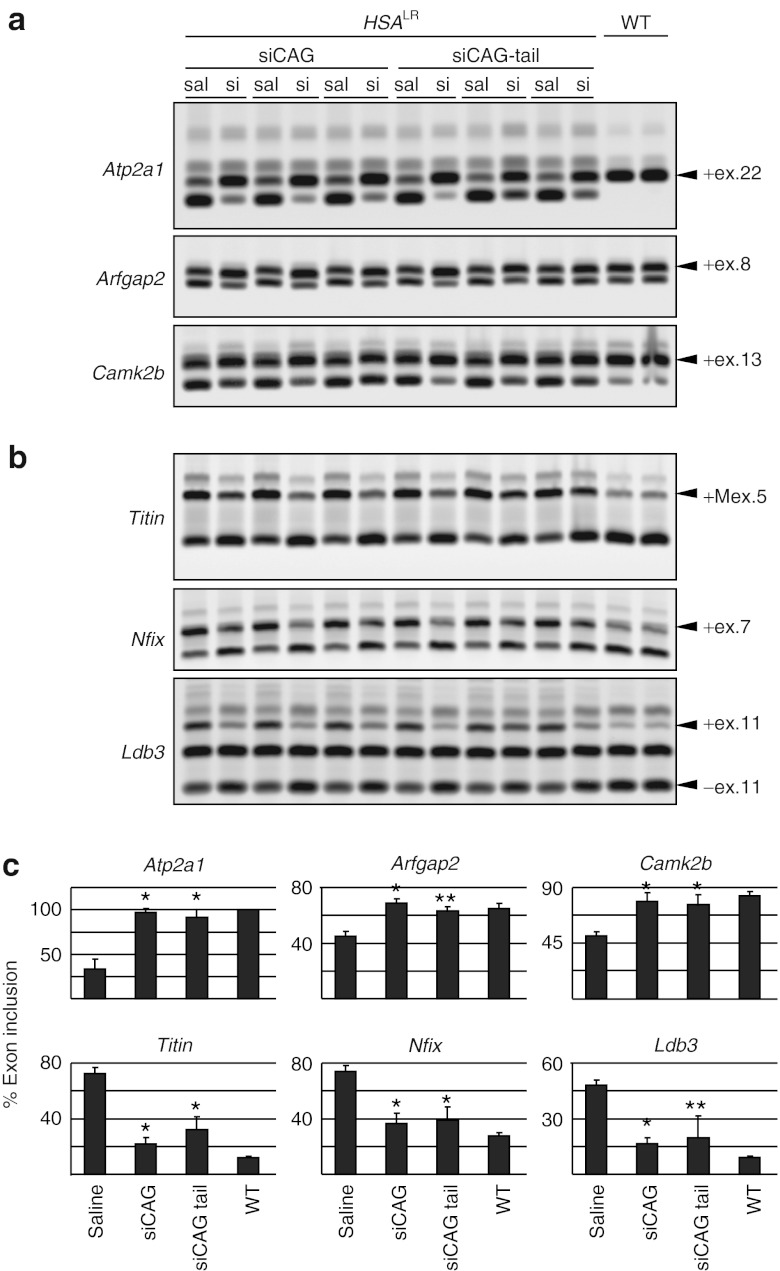Figure 3.
Effect of siCAG and siCAG tail on MBNL1 splicing regulatory activity. (a) RT-PCR analysis of alternative splicing for exon 22 (ex.22) of Atp2a1, exon 8 (ex.8) of Arfgap2, and exon 13 (ex.13) of Camk2b, three exons whose splicing is promoted by MBNL1. Splice products in wild-type mice are shown on the right side of gel. In response to siCAG, partial correction of alternative splicing was observed for each exon. RNA was extracted from tibialis anterior (TA) muscle of human skeletal actin—long repeat mice, 7 days after electroporation of siCAG or siCAG tail (si). The contralateral TA was electroporated with saline (sal). (b) Same as in (b), except that RT-PCR analysis was performed on exons whose alternative splicing is normally repressed by MBNL1: M-line region exon 5 (Mex.5) of Titin, exon 7 (ex.7) of Nfix, and exon 11 (ex.11) of Ldb3. (c) Quantification of results in (b) and (c), based on three independent experiments (mean ± SD). Results are expressed as the percentage of splice products including the alternative exons for four groups of animals (*P < 0.0001, **P < 0.05, Student's t-test for comparison with saline-treated muscles). HSALR, human skeletal actin—long repeat mouse; WT, wild type mouse.

